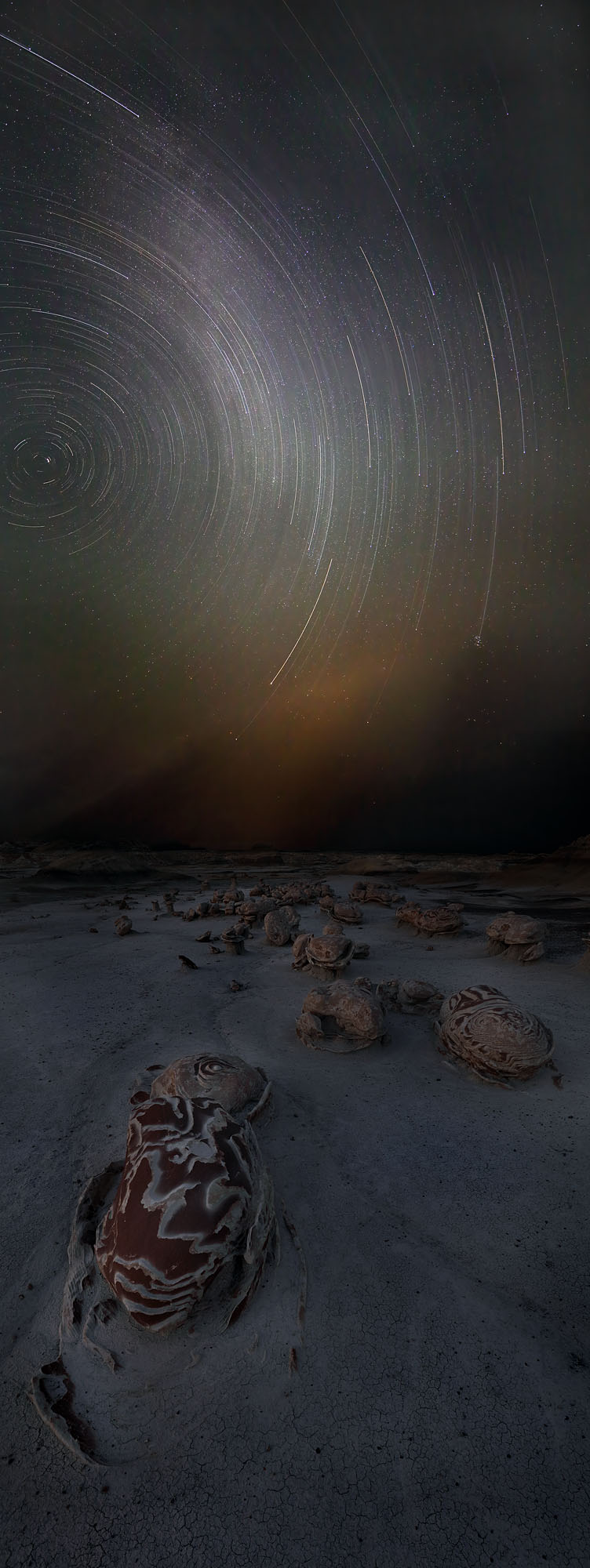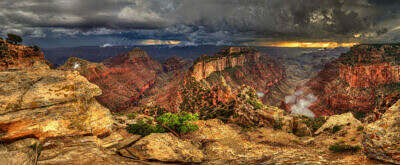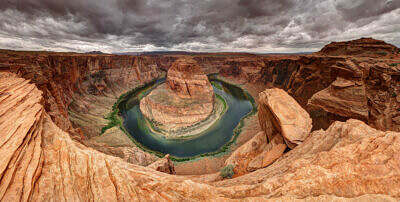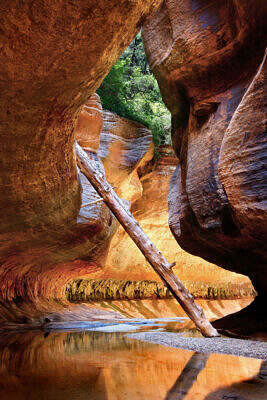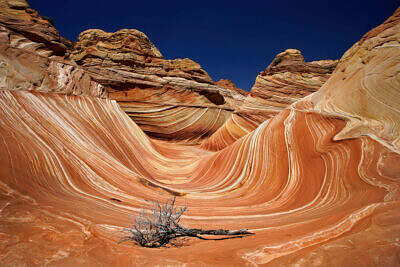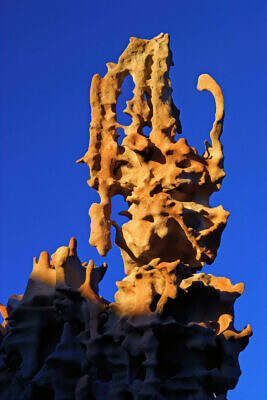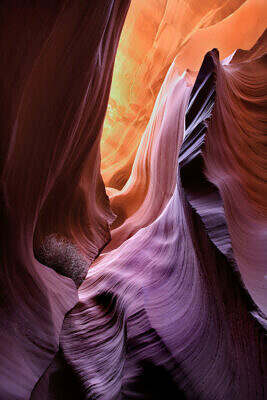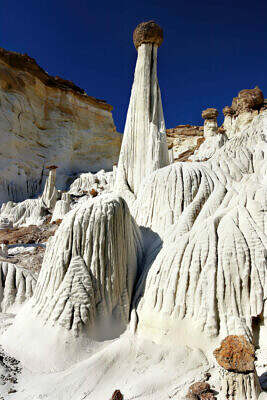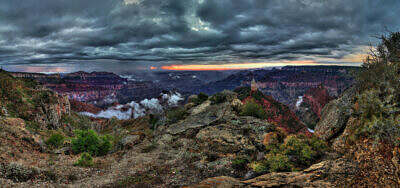The Cracked Eggs of the Bisti Wilderness, also known as De-Na-Zin, in northwestern New Mexico is among the most otherworldly landscapes on our planet, when viewed under the starry sky of the Milky Way. The Navajos called this region on the southeastern edge of the Colorado Plateau quite symbolically ‘Great Area with Hills’. The additional name De-Na-Zin refers to cranes in the Navajo language and very aptly describes the appearance of many of the rock formations in the area.
Under the star trails of the Milky Way, one could easily recognize crawling prehistoric creatures. However these rocks consist of 73 to 70 million year old mud from a shallow ocean.

